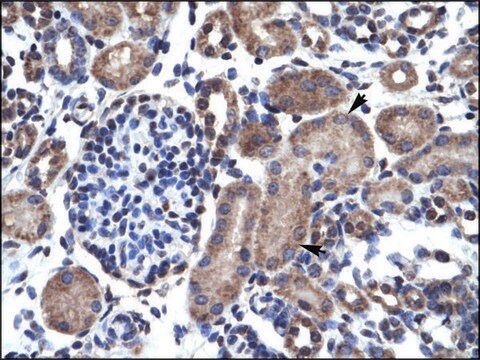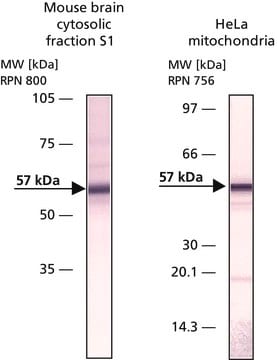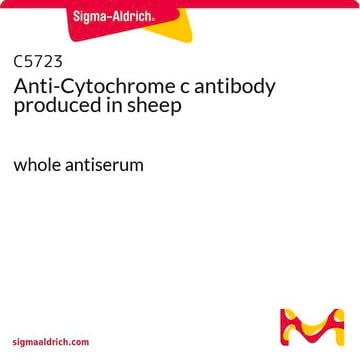B8429
Anti-Bax antibody, Mouse monoclonal
clone 6A7, purified from hybridoma cell culture
Sinonimo/i:
Anti-BCL2L4
About This Item
Prodotti consigliati
Origine biologica
mouse
Coniugato
unconjugated
Forma dell’anticorpo
purified immunoglobulin
Tipo di anticorpo
primary antibodies
Clone
6A7, monoclonal
Stato
buffered aqueous solution
PM
antigen 21 kDa (and possibly a dimer of 42 kDa)
Reattività contro le specie
mouse, rat, human
Concentrazione
2 mg/mL
tecniche
immunoprecipitation (IP): suitable
microarray: suitable
western blot: 10-60 μg/mL using extract of human breast adenocarcinoma MCF-7 cells, activated with dexamethasone
Isotipo
IgG1
N° accesso UniProt
Condizioni di spedizione
dry ice
Temperatura di conservazione
−20°C
modifica post-traduzionali bersaglio
unmodified
Informazioni sul gene
human ... BAX(581)
mouse ... Bax(12028)
rat ... Bax(24887)
Cerchi prodotti simili? Visita Guida al confronto tra prodotti
Descrizione generale
Immunogeno
Applicazioni
Azioni biochim/fisiol
Stato fisico
Esclusione di responsabilità
Non trovi il prodotto giusto?
Prova il nostro Motore di ricerca dei prodotti.
Raccomandato
Codice della classe di stoccaggio
12 - Non Combustible Liquids
Classe di pericolosità dell'acqua (WGK)
nwg
Punto d’infiammabilità (°F)
Not applicable
Punto d’infiammabilità (°C)
Not applicable
Scegli una delle versioni più recenti:
Possiedi già questo prodotto?
I documenti relativi ai prodotti acquistati recentemente sono disponibili nell’Archivio dei documenti.
I clienti hanno visto anche
Active Filters
Il team dei nostri ricercatori vanta grande esperienza in tutte le aree della ricerca quali Life Science, scienza dei materiali, sintesi chimica, cromatografia, discipline analitiche, ecc..
Contatta l'Assistenza Tecnica.








